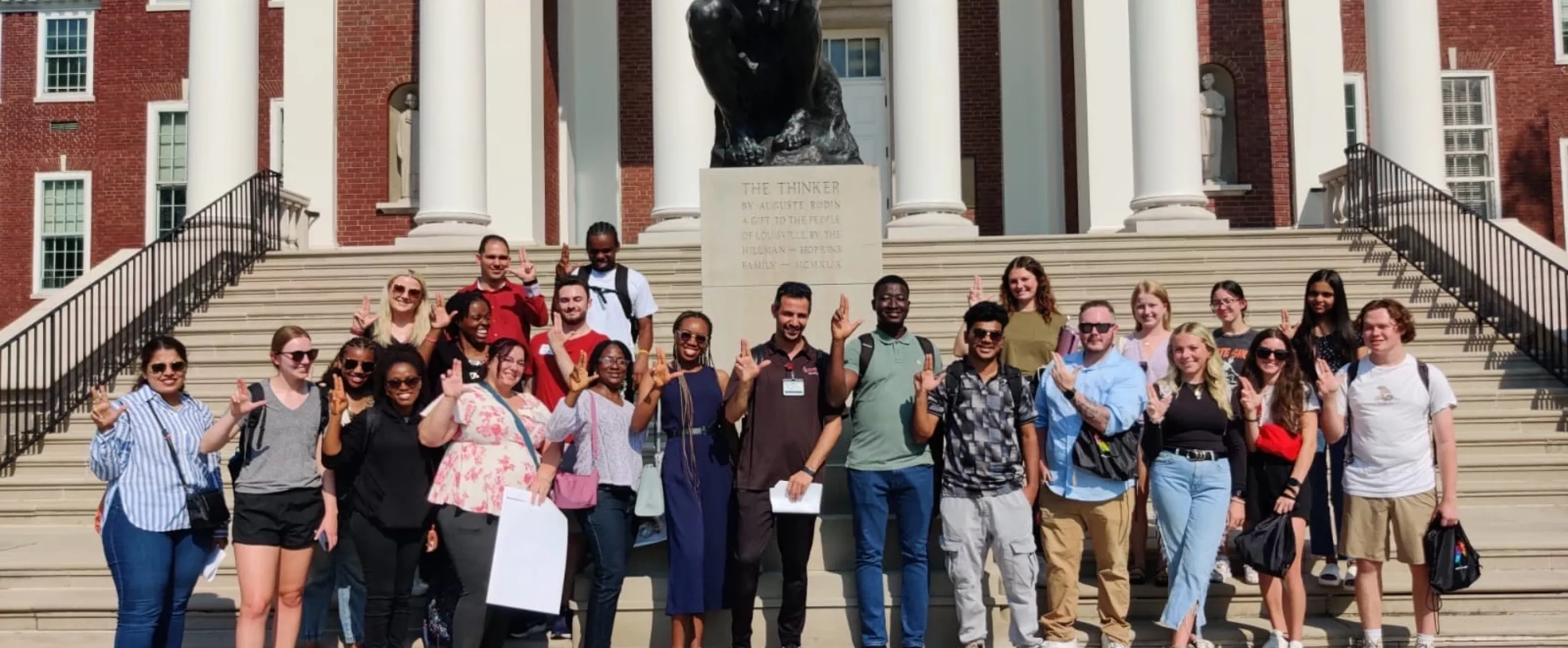| Month/Year | Student Name | Program/Dept. |
|---|---|---|
| Jan. 2023 | Danielle Little | PhD, Biochemistry and Molecular Genetics |
| Feb. 2023 | Donna Charging | Master's, Fine Arts |
| Mar. 2023 | Claire Johnson | Master's, Urban Planning |
| Apr. 2023 | Hailey Mattingly | Master's, Political Science |
| May 2023 | Ernesto Pena Calderin | PhD, Physiology |
| Jun. 2023 | Bailey LaPaugh | PhD, Audiology |
| Jul. 2023 | Tiffany Bystra | Master's, Social Work |
| Aug. 2023 | Esper Wadih | Master's, Healthcare Ethics |
| Sept. 2023 | Victoria Magloire | Master's, Healthcare Ethics |
| Oct. 2023 | Caitlin Reichard | Master's, Healthcare Ethics |
| Nov. 2023 | Drake Watson | Master's, Urban Planning |
| Dec. 2023 | Collin Wells | PhD, Biochemistry and Molecular Genetics |
| Month/Year | Student Name | Program/Dept. |
|---|---|---|
| Feb./Mar. 2022 | Erica Lewis | Master's, Fine Art |
| May 2022 | Nancy Ngo | Master's, Public Health |
| Oct. 2022 | Kyle Fulgham | PhD, Physiology |
| Nov. 2022 | Megan Norris | PhD, Experimental Psychology |
| Dec. 2022 | Clayton Robertson | PhD, Astronomy & Astrophysics |
| Month/Year | Student Name | Program/Dept. |
|---|---|---|
| Feb. 2021 | Jason Deakings | PhD, Public Health Education and Promotion |
| Apr. 2021 | Candace Spencer | Master's, Fine Arts in Performance |
| Jun. 2021 | Courtney Albers | Doctor of Nursing Practice |
| Oct./Nov. 2021 | Michelle Montalvo-Jourdan | Master's, Anthropology |
| Month/Year | Student Name | Program/Dept. |
|---|---|---|
| Jan. 2020 | Ashanti Peppers | Master's, Special Education |
| Mar. 2020 | William Beckerson | PhD, Biology |
| Sept. 2020 | Nana Bullock | PhD, Health Promotion & Behavior Science |
| Nov. 2020 | Taylor Webb | Master's, Applied Behavior Analysis |

